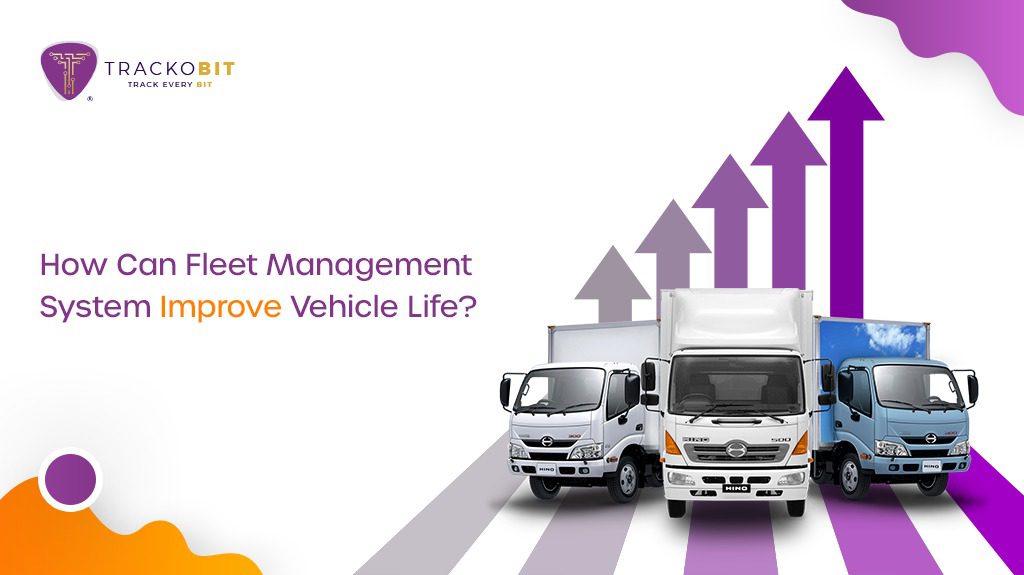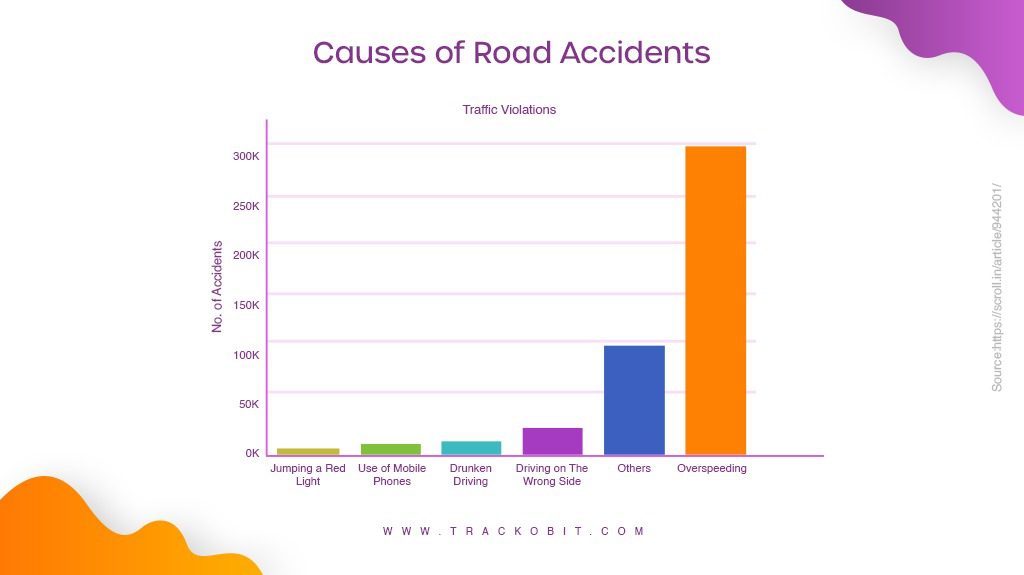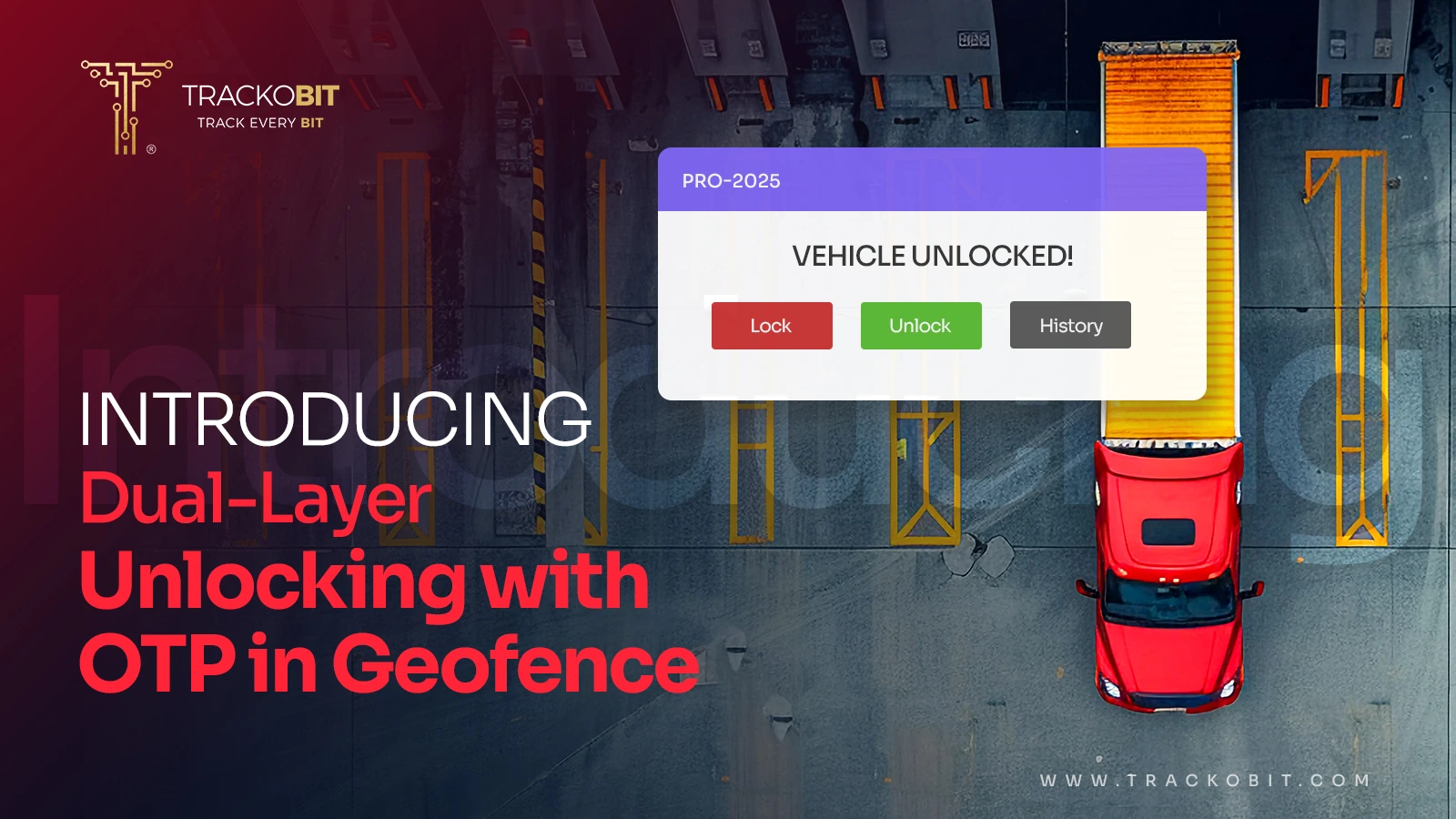-
TrackoBit
Manage commercial vehicles with the new-age Fleet Management Software
TrackoBit -
TrackoField
Streamline your scattered workforce with Field Force Management Software
TrackoField -
Features Resources
-
Blog
Carefully curated articles to update you on industrial trends. -
White Paper
Insightful papers and analysis on essential subject matters. -
Glossary
Explore an alphabetical list of relevant industry terms. -
What’s New
Get TrackoBit & TrackoField monthly updates here. -
Case Study
Explore the cases we solved with our diverse solutions. -
Comparisons
Compare platforms, features, and pricing to find your best fit.
-
About Us
Get to know TrackoBit: our team, ethos, values, and vision. -
Careers
Join the most dynamic cult of coders, creatives and changemakers. -
Tech Support
Learn about our technical support team and services in detail. -
Events
Check out the exhibitions where we left our marks and conquered. -
Contact Us
Connect with us and let us know how we can be of service.
How Can Fleet Management System Improve Vehicle Life?
- Author:Drishti Dua
- Read Time:8 min
- Published:
- Last Update: December 9, 2025
Table of Contents
Toggle
When we look right at the essence of a fleet, the question arises – what makes a fleet profitable?
Table of Contents
Toggle
The basic answer to this will be vehicles, of course. Vehicles in good condition will help drivers be more productive, which in turn translates to monetary profits. But upon deeper study, it becomes clear how many interdependent factors affect fleet health. So how exactly does a fleet management system fit into this picture?
Vehicle replacement is one of the primary contributors to a fleet’s expenses. This is why most managers look for optimisation methods for their vehicle depreciation. Let us see how the dynamic features of this system can totally transform a fleet’s operations.
What Causes Vehicle Damage?
Machinery depreciation is part of every business’ budget. But the rate at which this happens still has a great impact on their profits. Before looking into ways to reduce this rate, it is important to understand what causes vehicles depreciation:
Harsh Driving
One of the things that affect vehicle health negatively is the driver’s activities while they are on the road. Activities like overspeeding and acceleration often exude pressure on the vehicles’ engine. This pressure causes them to work faster than necessary, decreasing their life span significantly. Harsh driving practices not only negatively affect fleet health but can also have an impact on fuel consumption.
Overloading is a common practice in transportation where trucks often run with more weight than advised. Looking at the logistics industry, overloading was discovered to be the reason behind 70% of all road accidents.
Road Accidents

Fleet vehicles are constantly on the road which endangers their safety. Accidents are of two types, one caused due to lack of drivers’ awareness of their surroundings and the other because of external problems. 78% of all road accidents occur due to drivers’ fault.
Most often than not, accidents can cause irreversible damage to vehicles that might end up costing fleet businesses too much. In extreme cases it can ruin vehicles to the point of no return, forcing companies to invest in new vehicles.
With manual fleet management, it is difficult to come up with routes that will equally distribute the vehicles’ load instead of burdening a single one. Overloading vehicles can cause frequent breakdowns, affecting engines and tyres the most.
Vehicle Idling
Keeping vehicles in a resting state while their engine is still working can cause a lot of harm to their functioning capacity. When we think about idling, the main concern is the environmental impact. But idling is equally as harmful to vehicles too. Engine idling leaves fuel residue, damaging engine components such as piston rings, cylinders, and spark plugs
Ignored Maintenance
There are two major types of maintenance that any fleet needs to do. One is corrective maintenance which only comes into play once a fault has occurred regarding the vehicle. Fleet managers have little to no control over this. The second is preventive maintenance which plays an important part in keeping a fleet healthy.
Preventive maintenance is basically diagnosing any faults and potential breakdowns at an early stage. This helps managers ensure that the faults are remedied before they turn fatal. But when a fleet manager ignores the need for regular vehicle check-ups, they end up with a deteriorated fleet that could have been prevented. A study shows that almost 35% of road accidents caused due to malfunction are caused by tire damage which could have been rectified earlier.
Why Running Damaged Vehicles Harmful For Your Fleet?
Now we have understood what exactly causes fleet health to deteriorate over time. Running a damaged fleet can be very expensive, both in the terms of money and environmental degradation. Some of the ways a depreciated fleet can affect a business’ profitability are:
- Excessive Fuel Cost: We have already learned what malpractices on roads lead to high fuel consumption. Fuel prices reaching new heights every day is very concerning for fleet businesses. Consumption rate increases by almost 5% from vehicles idling alone. Harsh driving forces engines to work faster than optimal, ultimately forcing them to consume more fuel.
- Higher CO2 Emissions: Fuel used to run vehicles is not broken down completely and is instead released into the environment, therefore decreasing air quality. For every litre of fuel consumed, almost 2.64 kg of CO2 emission takes place. Upon comparison with your average fuel consumption, the results become concerning.
- Increased Breakdowns: Of course, when vehicles are not in working condition, they are going to increase fleet downtime. This can end up hitting businesses’ profits and also reduces their productivity. Breakdowns can also lead to accidents due to vehicle malfunction, leading to dangerous and expensive situations for managers.
How Can Fleet Management Systems Improve Vehicle Retention?
A fleet management system is designed to help fleet businesses better navigate their vehicles and drivers. The vehicle turnover issue is not dependent solely on lack of surveillance, but also on improper studying of the fleet. Vehicle tracking systems can remedy these problems though. Let’s understand how:
Driver Behaviour
The reason for maximum damage incurred by vehicles on the road is the driver’s carelessness while handling these vehicles. Thus, this solution allows managers to keep track of their drivers’ activities in real time.
Whenever a vehicle overspeeds, accelerates unnecessarily, harshly corners, idles, or abruptly brakes, the manager receives an alert. They can then investigate the reason behind these alerts.
Drivers know about this alert system and therefore make conscious efforts to drive by the rules. This is not only good for the vehicle’s health but also reduces accidents significantly. Thus, vehicles are able to maintain their optimal state for much longer. Businesses are therefore less burdened by the expense of having to buy new cars frequently.
Video Telematics
Video telematics is the technological advancement that has taken vehicle telematics to the next level. Now, every time an event is triggered while drivers are on the road, managers receive alerts. These alerts contain visual data (pictures and videos) captured via dashcams. Managers can use it to understand the reason behind alerts. There are two functions of video telematics:
- Driver Monitoring System (DMS): The Driver Monitoring system works closely with the driver behaviour solution to optimise drivers’ on-road activities. This system targets distracted driving practices more than harsh driving. Therefore, every time a driver is smoking, is drowsy, is yawning, or is blocking the camera, the dashcam captures evidence and transfers it to managers. This system can help prevent accidents.
- Advanced Driver Assistance System (ADAS): This system integrates cameras situated outside vehicles with the software. They alert managers and drivers both of any danger the vehicle might encounter. A good example of this is the proximity alert that warns drivers when they get in close vicinity with another vehicle or large object.
Both these features are targeted toward ensuring vehicle safety. When vehicles encounter less dangerous situations, their health also stays well. This reduces fleets’ overall expenditure significantly.
Route Planning
Deciding the most optimal routes for a vehicle to complete tasks is difficult if done manually. Imagine a fleet of 50 vehicles. This issue will increase beyond control, ultimately leading to inefficient decision making. Ultimately it will be the vehicle that will bear the bruns of such mistakes. One problem that leads to vehicle depreciation is overloading.
While planning routes it is essential that managers study route density. Only then should vehicles be given their tasks. For example, two trucks A and B, with capacities of 400kg and 500kg respectively, are to be sent out. Now instead of understanding their client’s needs, managers devise their routes. Thus, truck A ends up carrying 450kg of load while truck B just has to transport 400 kg worth of goods.
This situation can be easily rectified through the route planning solution that generates reports for managers to study. This data can be used to observe which paths require what capacity vehicles. This practice can help eliminate overloading vehicles and harming their condition. Overloading can not only pressurise engines but also cause damage to tyres. This means a higher rate of wear and tear on vehicles.
Managers also need to make sure that the routes where vehicles will ultimately run are safe. Paths containing unfavourable road conditions can negatively impact vehicles’ condition. They might lead to accidents and cause heavy damages to automobiles.
This is where route planning comes in. Managers can select routes that are short and safe. This reduces the vehicle’s engine hours and helps them avoid danger prone areas like snow filled routes and so on.
Service and Maintenance
We have already seen how harmful negligence towards vehicle maintenance can prove to be. This is why it is important that managers send their vehicles for regular checkups without fail. Vehicle tracking software can help this process. Its servicing and maintenance feature allows managers to schedule all maintenance procedures on the software.
As the day for this schedule approaches, alerts are sent out to managers as reminders. This happens a couple of days before the due date. Thus, managers can ensure timely servicing for their vehicles.
In The End
We have understood the working of a fleet management system right from the basics. It is apparent just how it can help your fleet. It is important to keep in mind just how harmful running old vehicles on the road can be. It can lead to major fatalities, endangering vehicles, drivers and consignment altogether.
TrackoBit can totally transform your fleet business. It is apparent just how effective the solutions this software offers are. So why not try them out for yourself? Request a demo and watch it change the game for your fleet!
Drishti Dua, a Content Contributor at TrackoBit has a rich background in literature and professional expertise in SaaS and technology writing. She has carved her niche in the space of Geospatial techn... Read More
Related Blogs
-

What Makes TrackoBit’s Video Telematics Software Truly Next-Gen?
Shemanti Ghosh December 17, 2025TrackoBit’s video telematics software blends smart video intelligence with full server control. The result? Superior fleet reliability and safety.
-

Plug, Pair, Perform TrackoBit Introduces BLE Sensor Integration
Tithi Agarwal November 26, 2025TrackoBit’s BLE Sensor Integration enables wireless, real-time monitoring with faster installs and accurate insights. It improves fleet efficiency, visibility, and…
-

How to Use Driver Behavior Reports as a Sales Hook to Close Big Fleets
Tithi Agarwal October 16, 2025TrackoBit’s driver behavior reports empower fleet providers to win big contracts by showcasing safety, efficiency, and measurable ROI.
-

TrackoBit’s Unlocking in Geofence with OTP: Elevating Cargo Protection
Tithi Agarwal September 16, 2025TrackoBit’s latest feature – Unlocking in Geofence with OTP lets you lock out theft and unlock cargo only at the…

Subscribe for weekly tips to optimize your fleet’s potential!
Your inbox awaits a welcome email. Stay tuned for the latest blog updates & expert insights.
"While you're here, dive into some more reads or grab quick bites from our social platforms!"Stay Updated on tech, telematics and mobility. Don't miss out on the latest in the industry.
We use cookies to enhance and personalize your browsing experience. By continuing to use our website, you agree to our Privacy Policy.


































